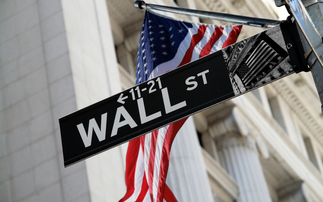
1. How do you expect US small caps to fare in the year ahead?
US small cap companies have derated relative to larger cap peers over the last couple of years, on fears over the broad economic outlook as the effects of monetary tightening flow through. The stellar performance of some mega cap tech stocks has only exacerbated this disparity. Given this starting point, the outlook for small cap stocks in 2024 could well be quite attractive if the economic picture develops more favourably than anticipated.
One attraction given current geopolitical tensions is its domestic orientation (70-80% revs versus circa 50% for the large cap market). In a deglobalizing world, US companies are bringing back manufacturing capabilities which should benefit industrial GDP over the next decade. Small and mid-cap form the backbone of the US economy and stand to benefit from this trend.
In contrast to the last few years, it appears we are unlikely to go back to a world of zero rates and zero inflation. The winners of the future may look different to the winners of the past. We are assuming rates and inflation both come down from here and both settle around 2-3% and the data would suggest we are most probably past peak rates. The 2024 presidential election will garner lots of media coverage but in our view will have minimal effect on markets over the medium term.
2. How has the higher-for-longer narrative affected smaller companies?
Smaller cap companies are typically more highly leveraged than their larger cap peers and have less access to finance. However, a potential US recession has been talked about for some time now and smaller cap companies have acted in advance by terming out their debt at lower interest rates, cutting non-essential costs, reducing inventories and headcount. The key will be to focus on those quality smaller cap companies with strong barriers to entry and pricing power, robust balance sheets and cash generative operations.
3. In 2023, small and mid caps disappointed with low performance. Do you see room for recovery in 2024?
Market expectations for smaller caps are low going into 2024, and this can often be seen as a great time to enter the market. There are many high-quality smaller cap companies out there trading on low forward price-earnings ratios. A gentle improvement in top-line revenues could well result in significant operating leverages in earnings, even without a re-rating of the asset class.
4. We've heard mixed messages about the length and severity of a possible US recession. What's your view?
We've already experienced a rolling, asynchronous recession in the US, which played out over the last few quarters. The US market has remained reasonably robust in the face of increased geopolitical and economic concerns. The US consumer has also held up well, with pent-up savings helping cushion against rising inflation and real wage growth starting to come through. The Global Financial Crisis conditioned investors to expect stark economic and market reactions to weak fundamentals. Following this recession cycle in the US, the economic and market reaction may be more muted given how it hasn't been driven by excess in quite the same way.
5. What are the risks and opportunities of AI and other areas of tech innovation for US small/mid caps?
AI will change the way we work and live over the next decade and will be an enormous tailwind for productivity. It may be, however, that investors expect these benefits to accrue more quickly than they actually do. Our portfolio is set to benefit from an increase in volumes of semiconductors used across a wide range of applications - factory automation, the Internet of Things, 5G and electric vehicles. This will bear fruit as increased connectivity and artificial intelligence proliferate. Companies that don't embrace these changes will be left behind.
6. What role do ESG criteria play in your portfolio selection and which are the most relevant for small/mid cap investors?
We view an assessment of a company's ESG positioning as contributing to the alpha we have been able to generate over the last decade or more. We look for well-governed businesses which are consciously behaving in a thoughtful and sustainable way. This has to be in respect of both their products and their services and operations.
In our index, where ESG practices can lag larger caps, particularly in terms of reporting and disclosure, engagement with companies is additive as a way of really get under the hood to find out whether companies are on the front foot. The in-house engagement capability at Federated Hermes provides a unique ability to do this and has, in our view, helped find some businesses which are ESG leaders before this was understood by the wider market.
7. In which sectors do you see the strongest growth potential?
Sectors currently of interest to us are industrials, aggregates and semiconductors. These sectors look well-supported from a structural perspective with reshoring, fiscal stimulus and connectivity and data usage trends likely to drive attractive top-line growth for the next decade.
One company in our portfolio engages in the design, development and marketing of integrated circuits and other electronic components. The company has spent the last 20 years developing market-leading capabilities around energy efficiency and power management. Given usage trends and the need for devices to operate more efficiently, the outlook for their products is become ever more exciting.
Another company in the portfolio engages in the provision of aggregates including crushed stone, sand, and gravel through its network of quarries and distribution yards. The cost to transport aggregates any meaningful distance leads to local oligopolies and considerable pricing power. This has driven steady returns over the last decade, despite it being a period of underinvestment in infrastructure.
To learn more, please explore our US SMID strategy capabilities page.
Investing in smaller/medium sized companies may carry higher risks than investing in larger companies.
For professional investors only. The value of investments and income from them may go down as well as up, and you may not get back the original amount invested. This is a marketing communication. The views and opinions contained herein are those of the author and may not necessarily represent views expressed or reflected in other communications. This does not constitute a solicitation or offer to any person to buy or sell any related securities or financial instruments.
Issued and approved by Hermes Investment Management Limited ("HIML") which is authorised and regulated by the Financial Conduct Authority. Registered address: Sixth Floor, 150 Cheapside, London EC2V 6ET. HIML is a registered investment adviser with the United States Securities and Exchange Commission ("SEC").













